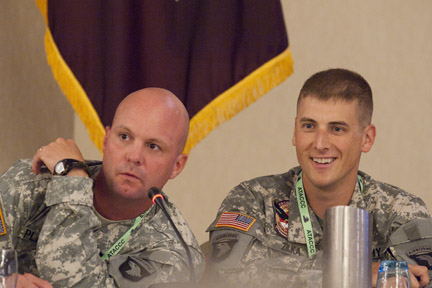Pre-Hospital Care: A Lifesaving Strategy on the Battlefield

Pre-hospital care is a key topic of the 2011 Advanced Technology Applications for Combat Casualty Care conference. The sessions taking place here will expand upon the importance of this subject by using data collected in the field as well as lessons learned to help shape recommendations for future treatment.
The goal of combat casualty care is to locate, diagnose, and treat injuries on the battlefield within the shortest amount of time possible. Past military engagements have taught us the value of the Golden Hour and we continue to improve upon the actions taken with that timeframe. New research, coupled with lessons learned has demonstrated that the actions taken place before the wounded warrior's arrival to the field hospital can have a profound effect on survival rates.
In addition to a deeper knowledge of combat casualty care, past engagements have also taught us to expect the unexpected and prepare for the worst. One of the most valuable lessons learned has been the importance of preparation through training, drills, and staged scenarios -- in fact the more challenging the better. In a combat situation, knowledge of pre-hospital Life Saving Interventions, or LSI, can mean the difference between life and death. These LSIs, such as applying a CAT or dressing a wound with Combat Gauze, provide opportunities to that improve care and reduce mortality and morbidity from injury.
A current study, led by Lt. Col. Vik Bebarta of the En Route Care Research Center at the U.S. Army Institute for Surgical Research is attempting to better understand LSIs. The study, which has collected and reviewed data from 625 patients, illustrates how LSIs can improve pre-hospital care. The data illustrates which LSIs are most effective when used in the field as well as those that may require additional training to supplement their use.
This information is critical as data on pre-hospital care, particularly in the area of military medicine, is limited. Additionally, the information will help us to understand which treatments will have the greatest impact.














